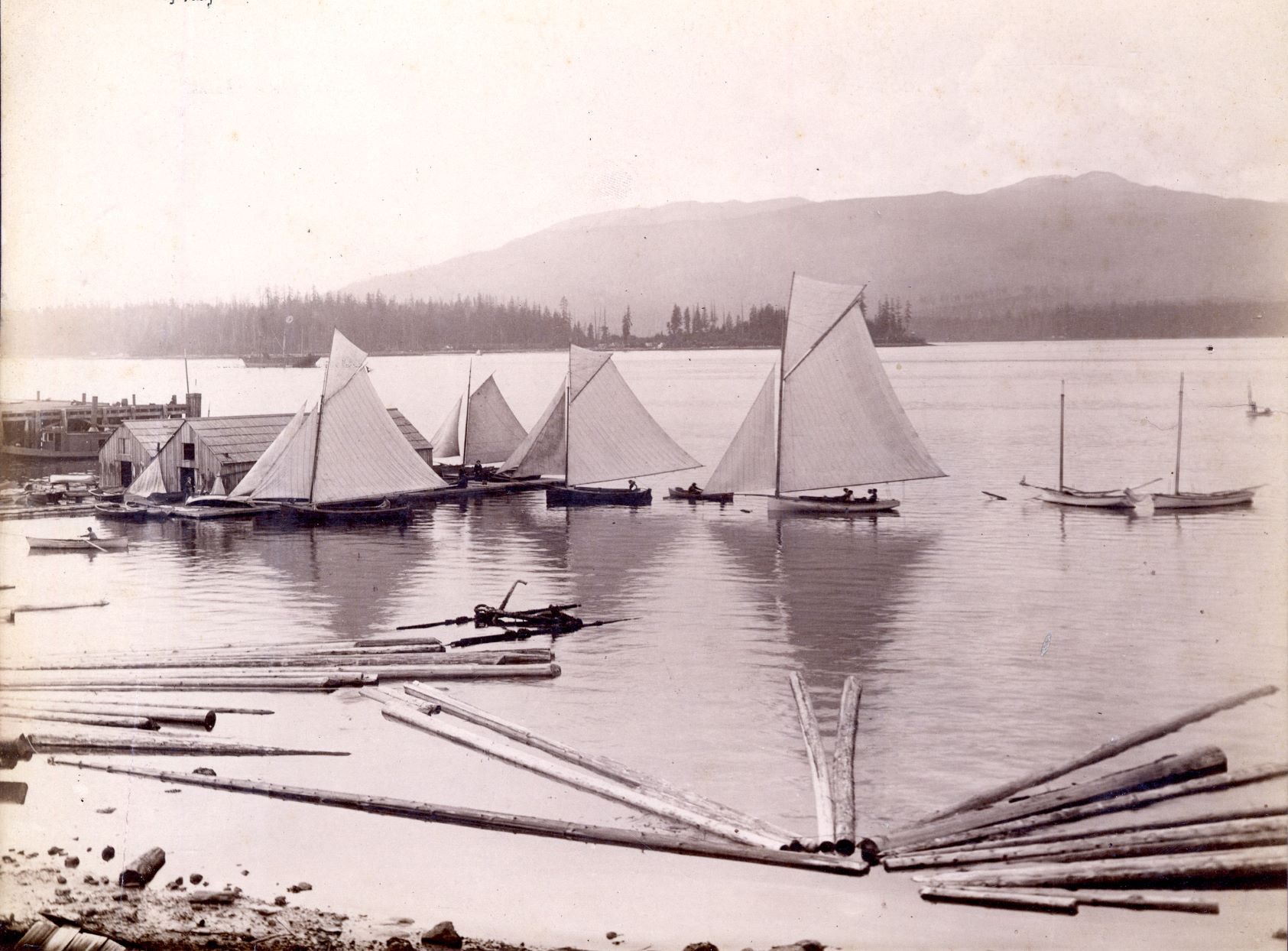Foot of Carrall: The Historical Maritime Gateway of Gastown
DOI:
https://doi.org/10.25071/2561-5467.915Keywords:
Vancouver waterfront, waterfront property rights, Burrard Inlet, Carrall Street, Gastown, Union Steamships, Canada Pacific Railway, City Wharf, Andrew Linton, Street-ends casesAbstract
The arrival of the Canadian Pacific Railway in Coal Harbour in 1887 challenged the traditional public water access to the Burrard Inlet, as the street-end location at the foot of Carrall Street was the longstanding water access to the preceding community of Gastown. Vancouver City Wharf, the would-be public dock, shared this favoured location with boatbuilder Andrew Linton. City Wharf was sold to Union Steamships in 1889, which was a company that understood the meaning of being at this critical historical node. This article explores the history of this maritime gateway, explaining how the company heritage of Union Steamships is conjoined with that of Gastown at the foot of Carrall.
L’arrivée de la Compagnie de chemin de fer du Canadien Pacifique en 1887 a remis en question l’accès public traditionnel à la baie Burrard, étant donné que l’emplacement de Coal Harbour au pied de la rue Carrall avait servi pendant longtemps d’accès à l’eau pour la communauté de Gastown. Le quai de Vancouver, l’éventuel quai public, partageait cet emplacement privilégié avec le constructeur d’embarcations Andrew Linton. En 1889, le quai de Vancouver a été vendu à l’entreprise Union Steamships, qui comprenait bien l’importance d’occuper ce lieu historiquement dominant. Le présent article étudie l’histoire de cette porte d’entrée maritime et explique comment l’héritage de l’entreprise Union Steamships est lié à celui de Gastown au pied de la rue Carrall.
References
Ashton, Jen. “Mind the Gap: A Gassy Jack Story.” British Columbia History 54, no. 2 (2021): 35-36.
Burnes, J. Rodger. Echoes of the Ferries: A History of the North Vancouver Ferry Service. Vancouver, self-published, 1974.
Cran, George and Norman Hacking. Annals of the Royal Vancouver Yacht Club, 1903 – 1965. Vancouver: Evergreen Press, 1965.
Delgado, James. Waterfront: The Illustrated Story of Greater Vancouver. Vancouver: Stanton Atkins & Dosil, 2010.
Hill-Turner, David. Business in Great Waters: A Brief History of Pilotage in British Columbia Waters. Vancouver: World Ship Society of British Columbia, 1987.
Little, Jack. “Views from the Deck: Union Steamship Cruises on Canada’s Pacific Coast, 1889 – 1958.” In Moving Natures: Mobility and Environment in Canadian History, edited by B. Bradley, J. Young, and C.M. Coates. Calgary: University of Calgary Press, 2016. 203-227. DOI: https://doi.org/10.2307/j.ctv6cfr6m.15
MacDonald, Norbert. “The Canadian Pacific Railway and Vancouver’s Development to 1900.” BC Studies 35 (Fall 1977): 3-35.
MacDonald, Robert A.J. “The Business Elite in Municipal Politics in Vancouver, 1886 – 1914.” Urban History Review 11, no. 3 (1983): 13. DOI: https://doi.org/10.7202/1019011ar
Matthews, J.S. Early Vancouver Volume 3. Vancouver: Noble Press, 1901.
Watts, Peter and Tracy Marsh. W. Watts & Sons Boat Builders: Canadian Designs for Work and Pleasure 1842 – 1946. Oshawa: Makinaw, 1997.
Webb, Roland. “Burrard Drydock Co. Ltd.: The Rise and Demise of Vancouver’s Biggest Shipyard.” The Northern Mariner VI, no. 3 (1996): 1-10. DOI: https://doi.org/10.25071/2561-5467.704
Wells, Martin. Coal Harbour Recollections. Vancouver: Cordillera, 2007.
Williams, Trevor. “Displeasurecraft: Hunger and Enmity on the SS Yosemite.” British Columbia History 54, no. 2 (2021): 28-31.
Wright, E.W. Lewis & Dryden’s Marine History of the Pacific Northwest. Portland: Lewis and Dryden Printing, 1896.

